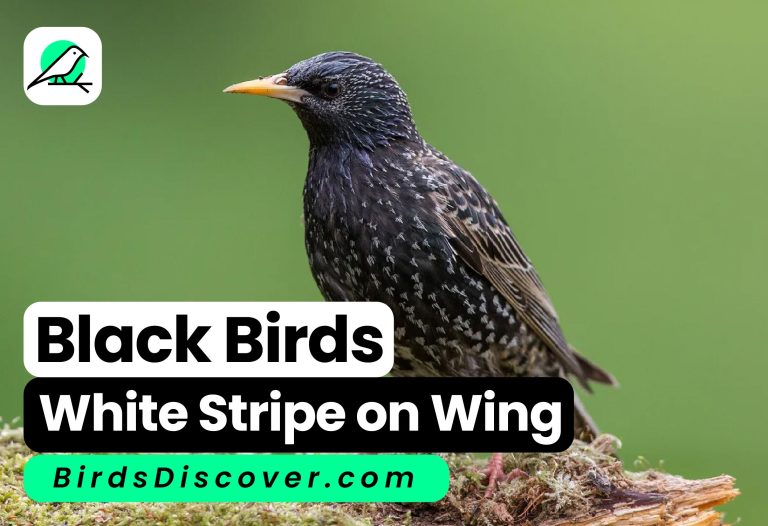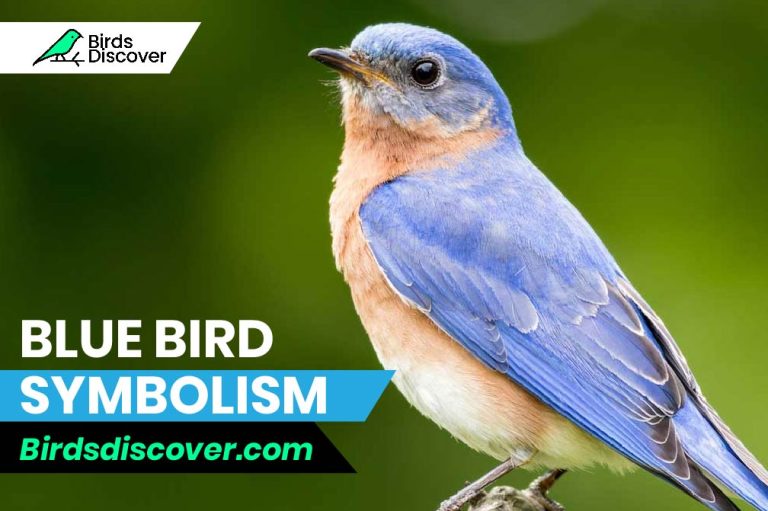Southern Ground Hornbill [Bucorvus leadbeateri]: Discover the Ultimate Guide

Scientific Classification
| Rank | Classification |
|---|---|
| Kingdom | Animalia |
| Phylum | Chordata |
| Class | Aves |
| Order | Bucerotiformes |
| Family | Bucorvidae |
| Genus | Bucorvus |
| Species | Bucorvus leadbeateri |
Southern Ground Hornbill
The Southern Ground Hornbill (Bucorvus leadbeateri) is a striking bird native to southern Africa, recognized for its large size and distinctive appearance. With a wingspan of up to 1.5 meters, it features a black body, white wing patches, and a bright red throat pouch. This hornbill primarily inhabits savannas and open woodlands, where it forages for insects, small reptiles, and fruits. Notable for its social behavior, it lives in groups and exhibits complex vocalizations. Conservation efforts are crucial as their populations face threats from habitat loss and human activities. Delving into their behavior and ecology reveals their ultimate role in their ecosystems.

Summary
- Scientific Name: Bucorvus leadbeateri
- Habitat: Found in southern Africa, including parts of South Africa, Botswana, Zimbabwe, and Mozambique.
- Appearance: Large bird with a black body, white wing tips, and bright red skin on the face and throat. Males have a large, conspicuous casque on their bill.
- Size: Approximately 90-130 cm in length and weighs 4-6 kg.
- Diet: Omnivorous; feeds on insects, small vertebrates, fruits, and seeds.
- Behavior: Ground-dwelling; often seen walking through savannas, grasslands, and open woodlands.
- Social Structure: Lives in small groups or pairs, with a strong hierarchical social structure.
- Breeding: Monogamous; pairs build large nests in tree hollows or on cliff ledges. Both parents care for the young.
- Conservation Status: Classified as Vulnerable due to habitat loss and human-wildlife conflict.
- Role in Ecosystem: Acts as a scavenger and predator of pests, contributing to ecological balance.
Description
| Aspect | Description |
|---|---|
| Scientific Name | Bucorvus leadbeateri |
| Habitat | Southern Africa (South Africa, Botswana, Zimbabwe, Mozambique) |
| Appearance | Large bird with black body, white wing tips, red facial skin, and males have a large casque on the bill |
| Size | 90-130 cm in length, 4-6 kg in weight |
| Diet | Omnivorous: insects, small vertebrates, fruits, and seeds |
| Behavior | Ground-dwelling, often found in savannas, grasslands, and open woodlands |
| Social Structure | Small groups or pairs with a strong hierarchical system |
| Breeding | Monogamous pairs; nest in tree hollows or on cliffs; both parents care for the young |
| Conservation Status | Vulnerable due to habitat loss and human-wildlife conflict |
| Role in Ecosystem | Scavenger and pest predator, helps maintain ecological balance |
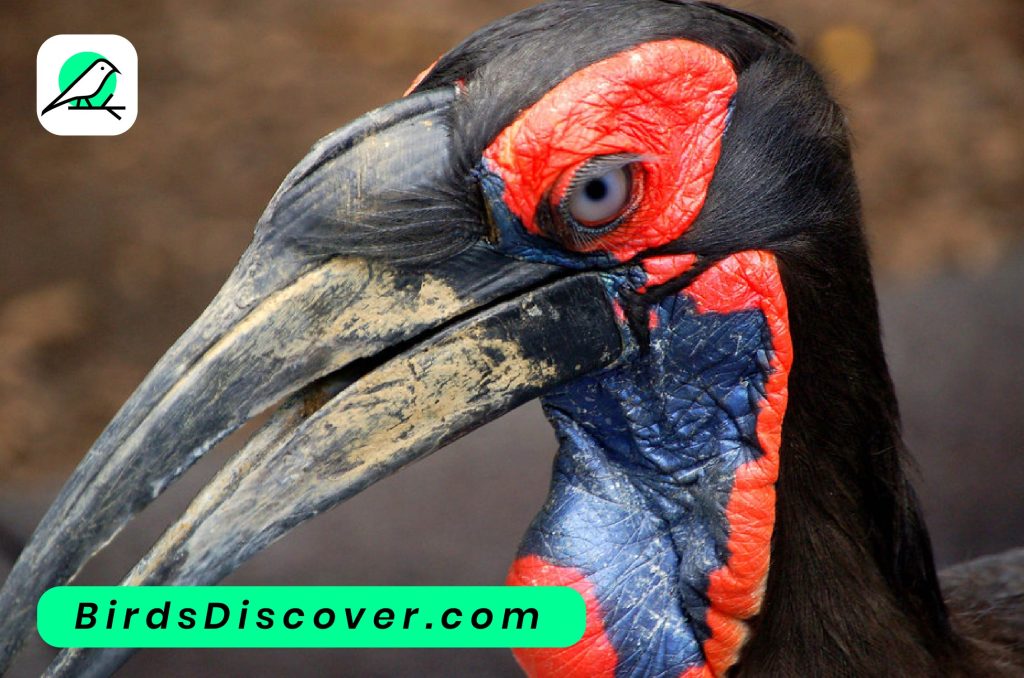
Distribution
- Geographic Range: Southern Africa
- Countries Found:
- South Africa: Widely distributed in the eastern and northeastern parts.
- Botswana: Common in the northern and central regions.
- Zimbabwe: Found in various habitats throughout the country.
- Mozambique: Present in the southern and central areas.
- Preferred Habitats: Savannas, grasslands, open woodlands, and sometimes light forest edges.
Habitat
- Primary Habitats: Savannas and grasslands.
- Additional Environments: Open woodlands and forest edges.
- Climate: Prefers areas with moderate to high temperatures, typically found in regions with seasonal rains and dry periods.
Breeding and life cycle
- Breeding Season: Typically during the rainy season.
- Nesting: Builds nests in tree hollows or on cliff ledges; both parents are involved.
- Eggs: Usually lay 1-2 eggs per clutch.
- Incubation: Lasts about 40-45 days, with both parents sharing the duty.
- Chick Rearing: Chicks fledge after 6-9 months; parents care for them for up to a year.
- Maturity: Reach sexual maturity around 5-7 years of age.
- Lifespan: Can live up to 30 years in the wild.
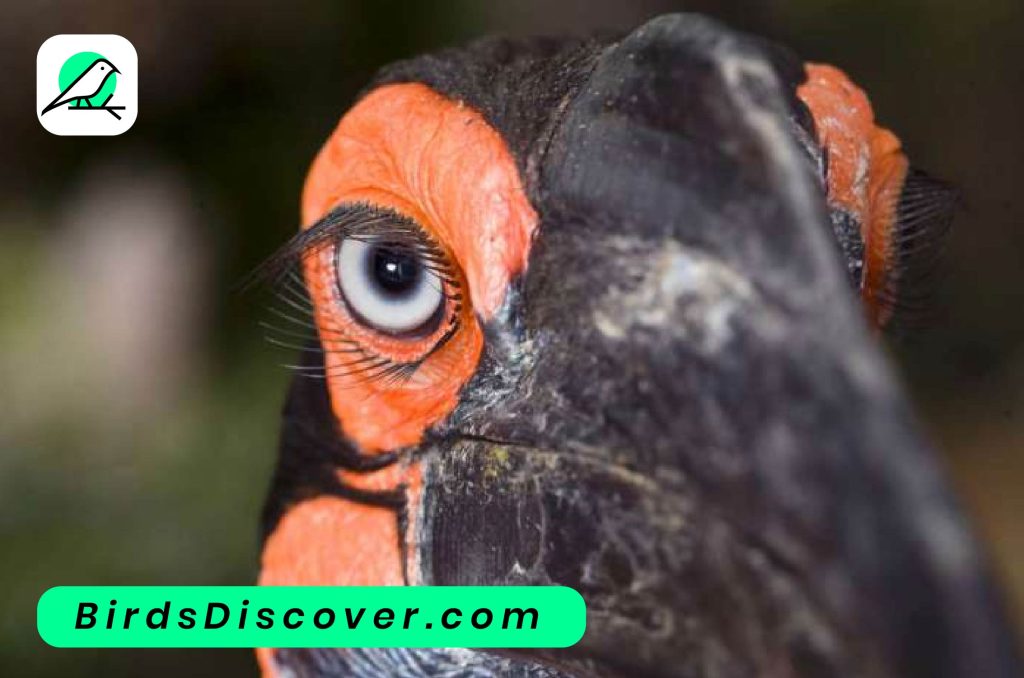
Species in same Genuso
| Species | Scientific Name | Description |
|---|---|---|
| Wattled Hornbill | Bucorvus abyssinicus | Smaller than Southern Ground Hornbill, with distinct wattles on the face and a casque. Found in East Africa. |
| Crowned Hornbill | Bucorvus cafer | Characterized by a prominent casque and crown; found in West and Central Africa. |
Friends and Foes
Friends:
- Mutualistic Species: May benefit from the presence of certain large herbivores like elephants that disturb the ground, making it easier to find insects.
- Companions: Often found in mixed-species flocks with other hornbill species during the non-breeding season.
Foes:
- Predators: Large raptors and snakes can pose a threat to eggs and chicks.
- Humans: Habitat loss, hunting, and human-wildlife conflict are significant threats.
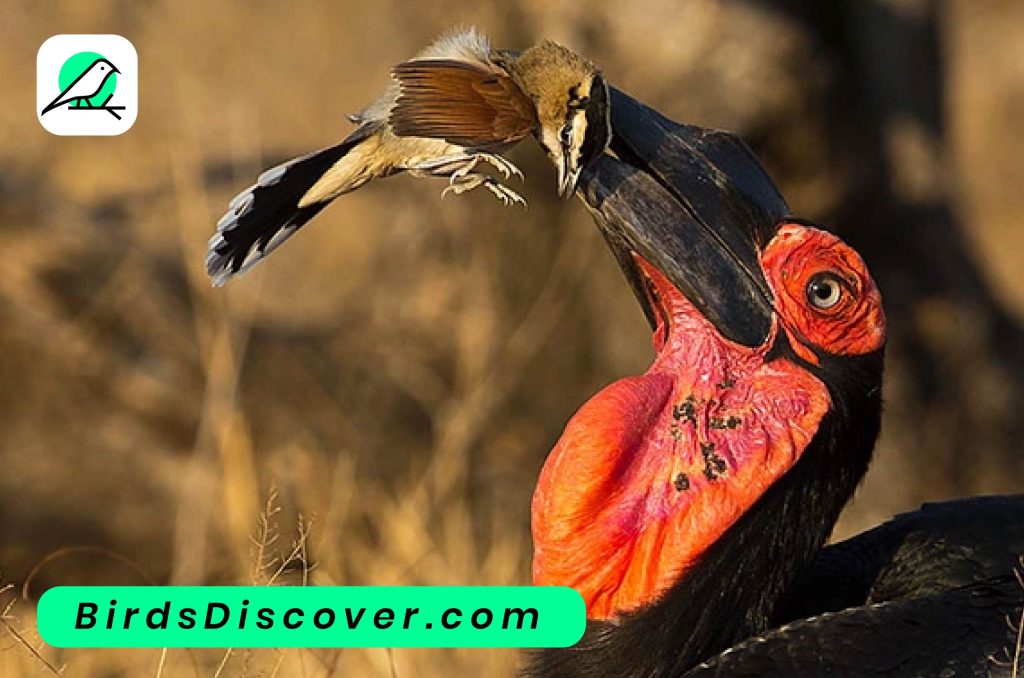
Conservation
| Aspect | Description |
|---|---|
| Conservation Status | Vulnerable (IUCN Red List) |
| Main Threats | Habitat loss, human-wildlife conflict, hunting, and disturbance from agricultural expansion |
| Protected Areas | Occurs in several protected areas and national parks within its range, such as Kruger National Park and Okavango Delta |
| Conservation Efforts | Habitat protection, anti-poaching measures, community awareness programs, and research on population dynamics |
| Captive Breeding | Some programs are in place to support breeding in captivity and reintroduce individuals into the wild |
| Local Conservation Groups | Collaboration with local NGOs and wildlife organizations to monitor populations and implement conservation strategies |
In culture
- Symbolism: Represents strength and resilience; featured in local folklore and traditional stories in southern Africa.
- Art and Craft: Depicted in various forms of African art, including carvings and paintings.
- Cultural Significance: Sometimes featured in ceremonies and as a symbol of regional identity and natural heritage.
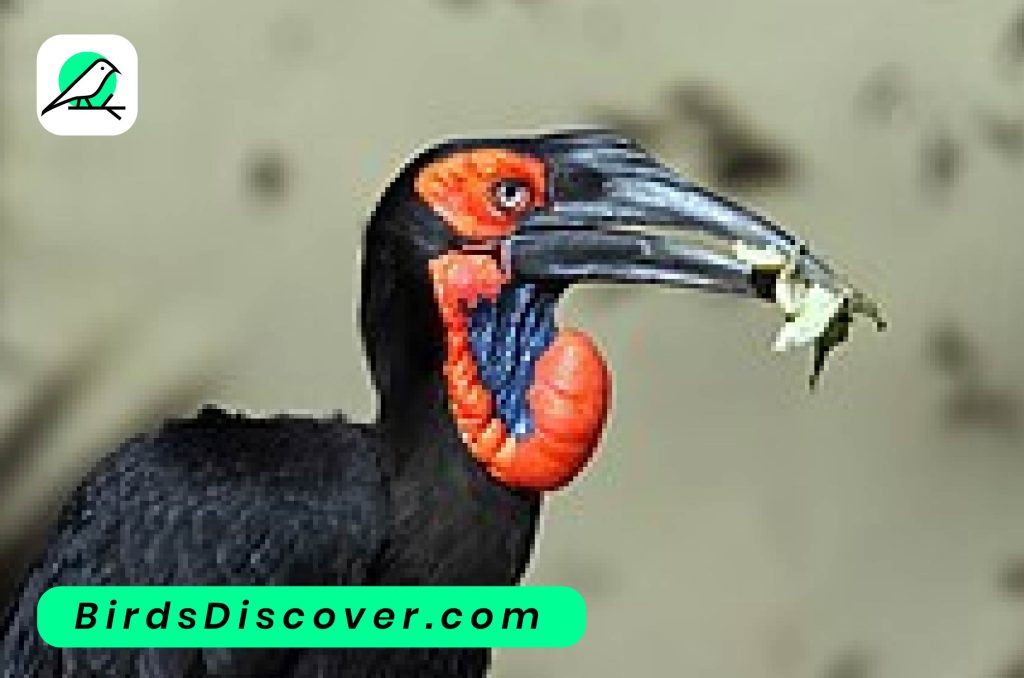
Connections to Death
The Southern Ground Hornbill has connections to death in some cultures:
- Symbolism: In various African traditions, it is seen as a harbinger of death or a symbol of the afterlife due to its scavenging behavior.
- Folklore: Often featured in myths and stories associated with death or the spirit world.
- Superstitions: Some communities view sightings or calls of the hornbill as omens or signs related to death or misfortune.
with weather connection ?
The Southern Ground Hornbill’s connection to weather includes:
- Behavioral Changes: Its activity and feeding patterns can be influenced by weather conditions, such as increased foraging during the rainy season when food is more abundant.
- Breeding Timing: Breeding often coincides with the rainy season, which provides better conditions for raising chicks.
- Weather Sensitivity: Severe weather events or prolonged droughts can impact their habitat and food availability, affecting their survival and reproduction.
How connected with modified perceptions?
The Southern Ground Hornbill’s connection with modified perceptions involves:
- Conservation Awareness: As perceptions of environmental conservation have evolved, the Southern Ground Hornbill has become a symbol of the need to protect biodiversity. Increased awareness has shifted public perception from viewing the hornbill as just a large, exotic bird to recognizing its ecological importance and vulnerability.
- Cultural Shifts: Modern interpretations of cultural symbols and myths have influenced how people view the hornbill. While traditionally seen as an omen or symbol of death, contemporary views often focus on its role in the ecosystem and conservation status, leading to more positive engagement and protection efforts.
- Scientific Understanding: Advances in research and education have modified perceptions about the hornbill’s behavior and ecological role. This shift in understanding has led to more informed conservation strategies and a greater appreciation of its role in maintaining ecological balance.
- Tourism and Education: Eco-tourism and educational programs have changed how people perceive the Southern Ground Hornbill, highlighting its beauty and importance rather than focusing solely on superstitions or traditional beliefs.
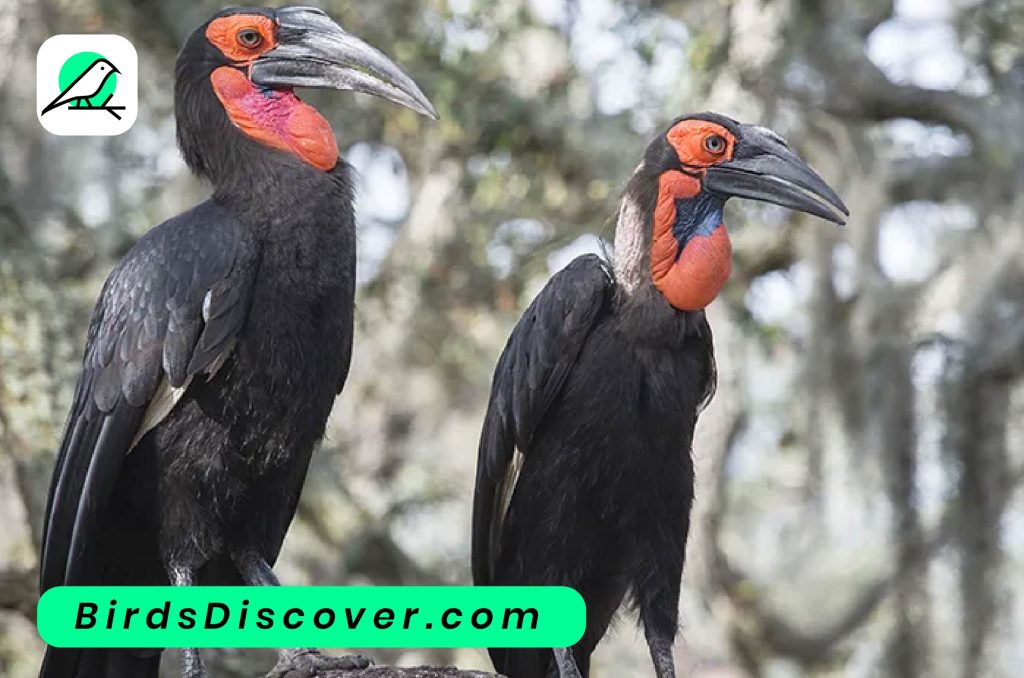
Lifespan
The lifespan of the Southern Ground Hornbill typically ranges from 20 to 30 years in the wild. In captivity, with proper care and management, they can sometimes live longer, up to around 35 years.
Communication
The Southern Ground Hornbill communicates through a variety of vocalizations and displays. Its calls include a deep, resonant booming sound that can carry over long distances, primarily used for maintaining territory and coordinating with group members. These calls are especially prominent during the breeding season when they help reinforce pair bonds and signal their presence to potential rivals. In addition to vocalizations, the hornbill employs visual signals such as head-bobbing and displays of its bright facial skin and casque to communicate with other hornbills. These visual and auditory cues are crucial for establishing social hierarchies, coordinating group activities, and alerting others to threats.
Common Names in Different Languages
| Language | Common Name |
|---|---|
| English | Southern Ground Hornbill |
| Afrikaans | Grondsnoek |
| Zulu | Umthombothi |
| Xhosa | Umthombothi |
| Swahili | Tambo |
| Sesotho | Tlhokomela |
| Tswana | Kgokgole |
| Shona | Hobo |
| Ndebele | Umthombothi |
| Portuguese | Abutre-do-sul |
| French | Calao terrestre du sud |
| German | Südlicher Erdhornvogel |
| Spanish | Hornbill terrestre del sur |
| Italian | Bucero terrestre del sud |
| Dutch | Zuidelijke Grondsnoek |
Conclusion
Southern Ground Hornbill [Bucorvus leadbeateri] stands out as a symbol of the intricate and captivating dynamics of avian life. With their imposing size, striking appearance, and distinctive behaviors, these hornbills offer a unique window into the world of large, ground-dwelling birds. Their complex social structures, impressive hunting skills, and crucial role in their ecosystem highlight the importance of conserving their habitats and ensuring their survival. By delving into the ultimate guide on the Southern Ground Hornbill, we gain a deeper appreciation for these majestic birds and the vital role they play in the biodiversity of their environment. Understanding and protecting such extraordinary species enriches our knowledge of nature and underscores the need for ongoing conservation efforts.
FAQS
What does the Southern Ground Hornbill look like?
The Southern Ground Hornbill has a large black body with white wing tips, bright red facial skin, and a prominent casque on its bill, especially in males.
How does the Southern Ground Hornbill communicate?
It uses deep, resonant calls for territory and coordination, along with visual displays such as head-bobbing and showing its facial skin to communicate with other hornbills.
Is the Southern Ground Hornbill endangered?
Yes, it is classified as Vulnerable due to habitat loss, human-wildlife conflict, and hunting, which threaten its population.
What is the Southern Ground Hornbill’s habitat?
It inhabits savannas, grasslands, and open woodlands in southern Africa, thriving in areas with moderate to high temperatures and seasonal rains.
How does the Southern Ground Hornbill care for its young?
Both parents incubate the eggs and care for the chicks, which fledge after 6-9 months. They continue to care for the young for up to a year before the chicks become independent.

